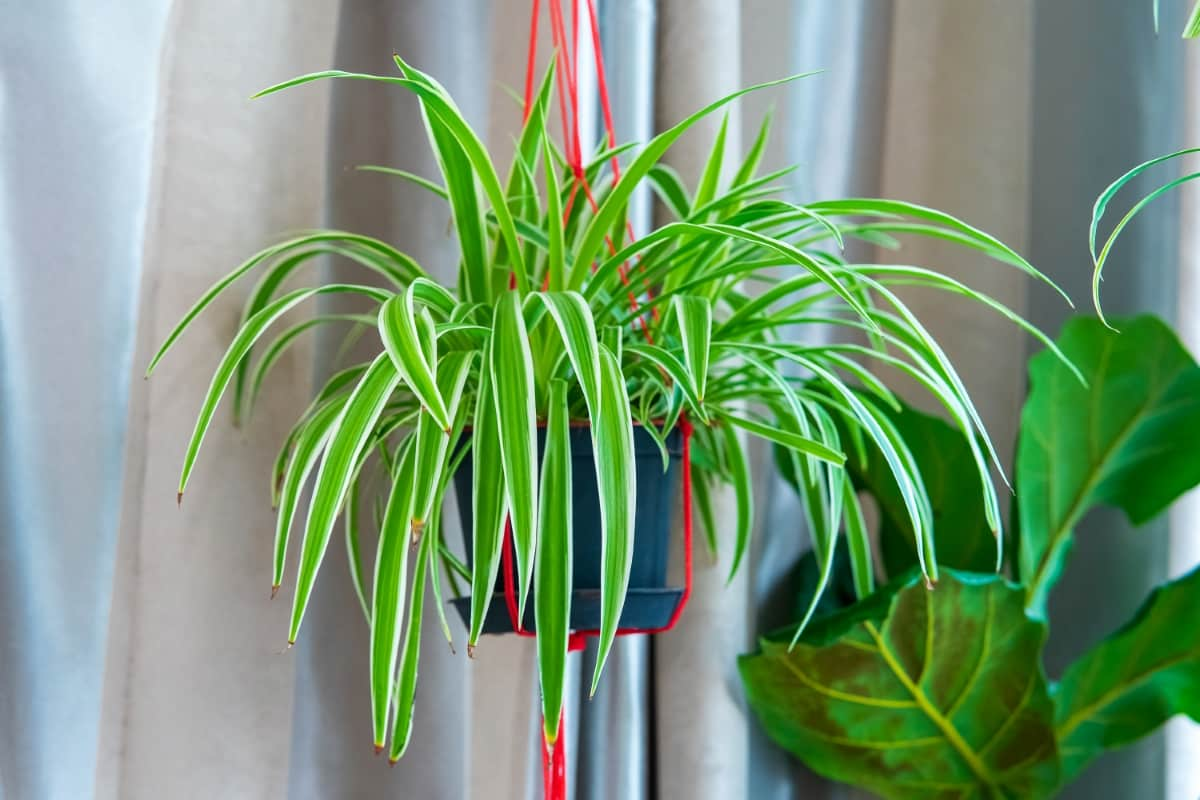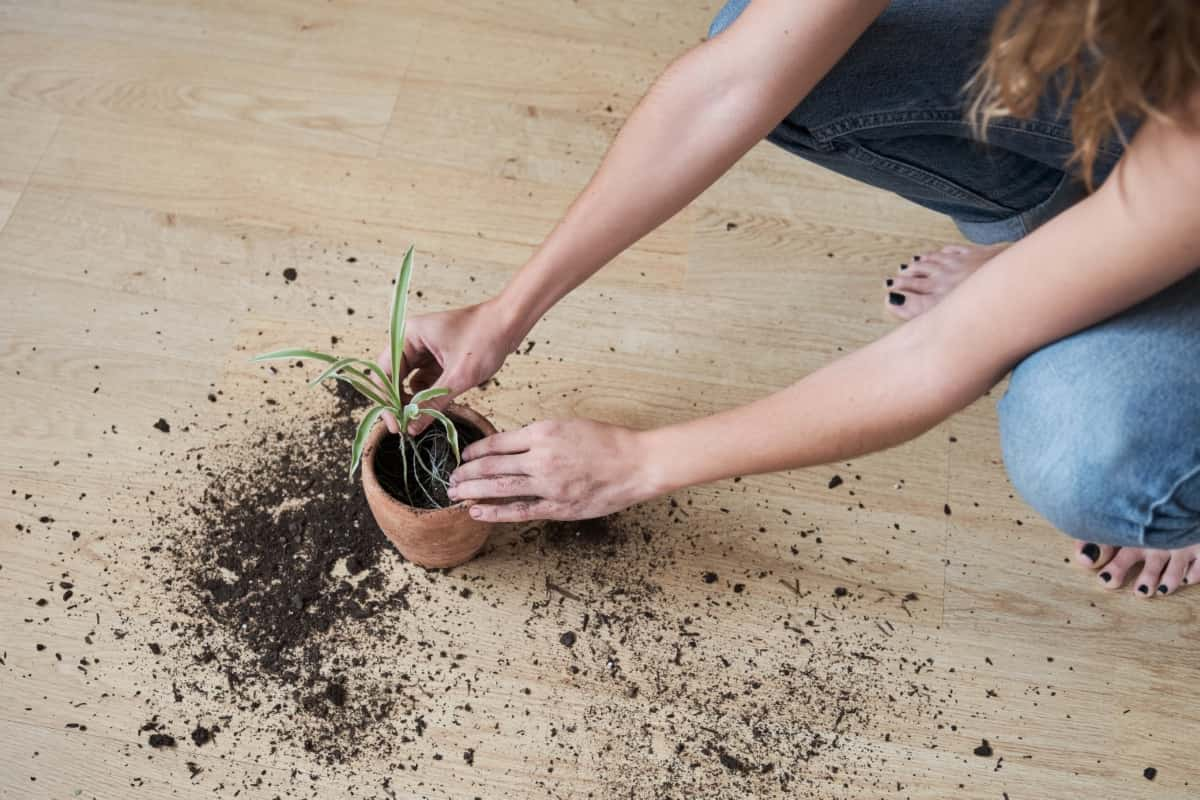Spider plants are a delightful addition to any home, celebrated for their resilient nature and ability to purify indoor air. It’s no wonder the spider plant is a favorite among beginner and seasoned plant enthusiasts alike. This article will guide you on cultivating a thriving spider plant, detailing every process stage, from initial planting to mature growth.

We’ll cover everything you need to know, including spider plant indoor care, the benefits of keeping a spider plant indoors, making your spider plant bushier, and growing a spider plant in water. You’ll also find tips on spider plant care in winter and learn about the various growth stages of the spider plant.
How to Grow and Care for Spider Plant
How to Grow Spider Plant Indoors
If you want to grow a spider plant indoors, your first step is to select a suitable pot. A pot with drainage holes is ideal, as spider plants do not fare well in waterlogged soil. The potting mix should be well-draining. Spider plants can thrive in a wide range of light conditions but prefer bright, indirect light. Direct sunlight can scorch the leaves, so avoid placing the plant in a window with harsh afternoon sun. Keep in mind that spider plants are sensitive to temperature changes and thrive best in temperatures between 65 and 75 degrees Fahrenheit.
Best Soil for Spider Plant Growth
The next thing to consider is the soil. While spider plants are not overly picky about their soil, they prefer a well-draining mix to prevent their roots from waterlogging. A regular potting mix combined with perlite or sand to enhance drainage works well. You want to soil with enough water to keep the plant hydrated and allow excess water to drain away easily.
Watering Schedule for Spider Plant
One of the keys to a healthy spider plant is knowing when and how much to water it. Spider plants like their soil to dry out slightly between watering, so do not overwater them. Gently place your finger about one inch deep into the soil. If the soil feels devoid of moisture, it indicates the need for watering. If it’s still damp, wait a couple more days. When you do water, water thoroughly until water flows out the bottom of the pot. However, don’t let the plant sit in water, which can cause root rot.
Spider Plant Propagation Methods
One of the most exciting aspects of owning a spider plant is the ease with which it can be propagated. If your spider plant is healthy, it will produce long stems with small plantlets on the ends. These can be cut off and placed directly into the soil or started growing in water. Just be sure to move them to the soil after they develop roots, as spider plants grown in water alone can become weak and prone to disease.
Spider Plant Pest Control Remedies
Despite their resilience, spider plants are occasionally bothered by pests like aphids, mites, and whiteflies. If you see signs of pests, like discoloration or tiny bugs on the leaves, you can use several safe, natural remedies. Try wiping the leaves with a soft water-soaked cloth and mild dish soap. If the problem persists, consider a pesticide specifically formulated for indoor plants.
Spider Plant Pruning and Trimming Techniques
Regularly trimming and pruning your spider plant can help it grow bushier and healthier. Remove any yellow, brown, or dead leaves to keep the plant looking fresh and stimulate new growth. You can also trim the long stems if you want the plant to focus more on growing its central rosette of leaves.
In case you missed it: How to Grow and Care for Bird of Paradise: Planting Instructions

Spider Plant Sunlight Requirements
Spider plants are fairly adaptable when it comes to light requirements. They exhibit tolerance towards low light conditions but favor bright, indirect sunlight. Excessive exposure to direct sunlight can result in leaf scorching. If you notice the leaf tips turning brown, it might be a sign that your plant is getting too much light. Conversely, if your plant isn’t producing as many leaves as normal, it might need more light.
Spider Plant Fertilizer Recommendations
Fertilizer can give your spider plant a helpful boost, especially during the growing season. In the spring and summer, fertilize your spider plant once a month with a general-purpose indoor plant fertilizer. Remember, it’s always better to under-fertilize than over-fertilize. During the winter months, it’s best to stop fertilizing altogether, as the plant goes dormant, and too many nutrients can build up in the soil and harm the plant.
Troubleshooting Common Spider Plant Problems
Like any plant, spider plants can occasionally experience problems. If the leaves are yellowing, it might indicate overwatering or poor drainage. If the leaf tips are browning, it could be due to too much sunlight, low humidity, or fluoride in the water. Try using distilled water and moving the plant to a less sunny spot. If the plant seems generally unhealthy, consider repotting in fresh soil, and always check for signs of pests.
Spider Plant Hanging Basket Care
Spider plants look particularly stunning in hanging baskets, their long, arching leaves creating a waterfall of green. Hanging baskets also make it easy to display the spider plants to their best advantage. Care for a spider plant in a hanging basket is the same as in a pot. Ensure to select a location that receives ample bright, indirect sunlight and water the plant adequately upon observing dryness in the top inch of the soil.
Spider Plant Care in Winter
Spider plant care in winter differs slightly from the rest of the year. As they enter a dormant phase during the colder months, they require less water and no fertilizer. Also, be mindful of temperature drops, especially at night. Spider plants prefer a steady temperature and are sensitive to cold. Keep them away from drafty windows and doors.
Monitoring Spider Plant Growth Stages
Understanding the spider plant growth stages is crucial for effective care. Spider plants begin as small rosettes, slowly growing larger and producing long, arching stems called ‘spiders.’ Each ‘spider’ can produce several baby spider plants, or ‘spiderettes’. These ‘spiderettes’ can be left to grow on the mother plant, eventually taking root and becoming independent plants. Or they can be removed and planted separately. Paying attention to these stages is important because each has unique needs.
In case you missed it: How to Plant and Care for Snake Plant: Propagation to Growing Instructions

For instance, a newly planted ‘spiderette’ will need more frequent watering than a mature plant. Conversely, a mature plant will need more regular pruning to keep it bushy and healthy. By keeping an eye on the growth stages of your spider plant, you can tailor your care to its specific needs and ensure it stays happy and healthy.
Conclusion
In summary, spider plants are a wonderful choice for those new to houseplants. Their minimal care requirements and air-purifying abilities make them a great choice for improving your indoor environment.
- Feed Your Flock for Less: Top 10 Tips to Save on Chicken Feed
- Ultimate Guide to Ossabaw Island Hog: Breeding, Raising, Diet, and Care
- Hatching Answers: The Top 10 Reasons Your Chickens Aren’t Laying Eggs
- Eggs and Economics: Breaking Down the Cost of Raising Backyard Chickens
- Defend Your Greens: Proven Methods to Keep Iguanas Out of Your Garden
- Ultimate Guide to Cinnamon Queen Chicken: A Comprehensive Guide for Beginners
- Ultimate Guide to California Tan Chicken: Breeding, Raising, Diet, Egg-Production and Care
- Ultimate Guide to Marsh Daisy Chicken: Breeding, Raising, Diet, and Care
- 10 Types of Chicken Farming Businesses You Can Start for Profits